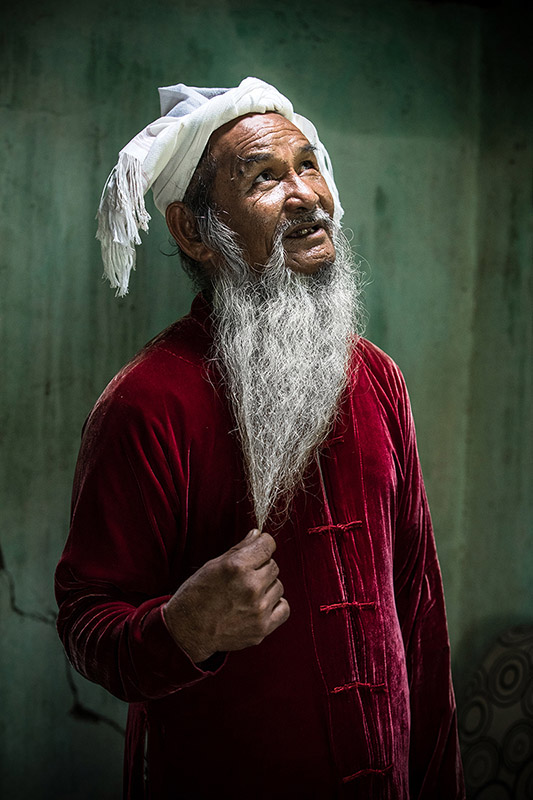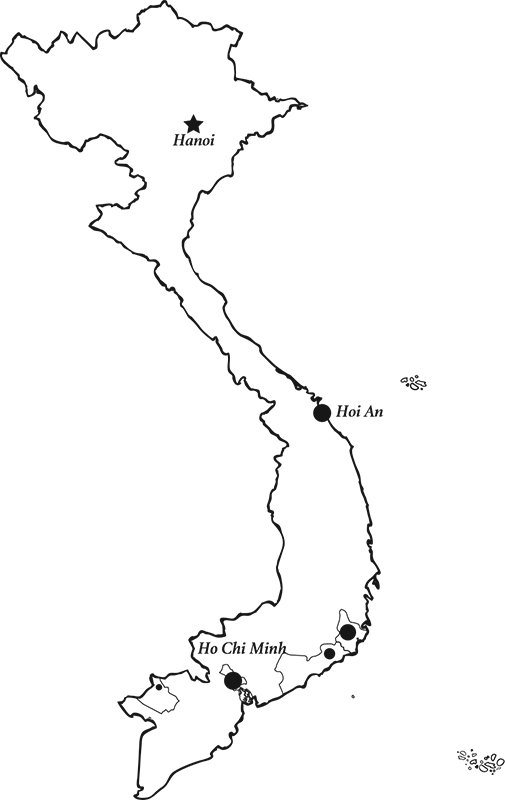The Cham reside on the central coast and along the Mekong Delta. Their history goes back to the 2nd century when parts of South and Central Vietnam were known as the Kingdom of Champa. Champa was dissolved in the 15th century but elements of their ancient civilization can still be seen in the continued strength of their culture, craftsmanship and religion. The Cham are considered to be the root of Muslimism in Vietnam; however, Hinduism is also practiced depending on the region. Cham girls and women typically wear headscarves to cover their hair in accordance with their religious beliefs.
In Chau Doc, in the Mekong Delta area, it is still possible to witness families making their silk costumes worn in everyday life. In An Giang, only a few families still use traditional weaving techniques, but they now use industrially dyed cotton rather than silk. A typical piece of fabric is made of 3,000 threads. Younger generations are not interested anymore in this tradition because of its complexity. However, Cham costumes are unique and worth being seen.
In 2020, I decided to fund a school for kids in this area in collaboration with the French NGO, Enfants The man featured in this photograph inspired me in a special way, that’s why I took a photo of him when I usually only capture portraits of women dressed in their traditional costumes.
Vietnam. I believe education is a way to break the circle of poverty. In addition, as proven by the initiatives of other tribes, if the children wear their traditional costumes to school at least once a week they will be more likely to maintain cultural pride.

